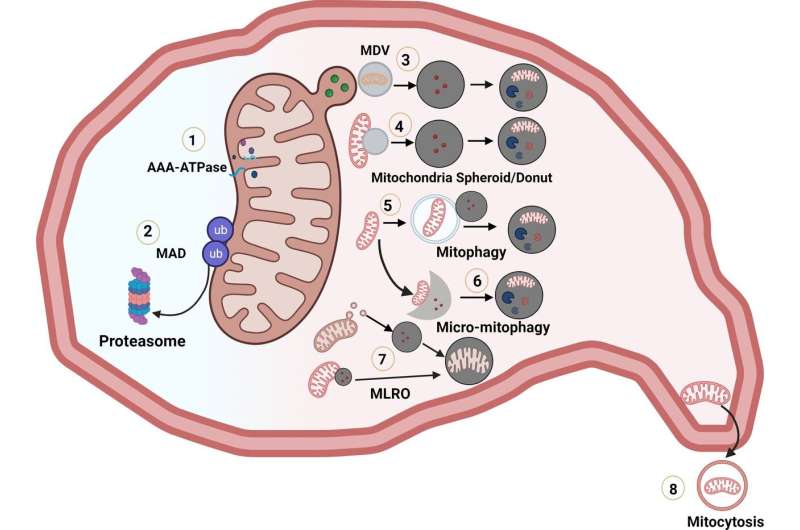This article has been reviewed according to Science X's editorial process and policies. Editors have highlighted the following attributes while ensuring the content's credibility:
fact-checked
proofread
Understanding chronic liver disease through mitochondria

Scientists have identified a new organelle in liver cells called the mitochondria-lysosome-related organelle (MLRO). This discovery could improve our understanding of chronic liver diseases like alcohol-associated liver disease (ALD) and metabolic dysfunction-associated fatty liver disease (MAFLD).
Mitochondria are essential components of cells because they generate energy. They also play a crucial role in metabolism, calcium signaling, and cell survival. When mitochondria malfunction, it's linked to various liver diseases.
Cells have intricate mechanisms to maintain healthy mitochondria. One way is to get rid of damaged parts through a process called mitophagy. However, researchers have now found a new pathway involving MLRO.
MLRO is a unique organelle formed by the fusion of a mitochondrion and a lysosome, a cellular "garbage disposal" unit. This hybrid organelle appears to be an alternative way to break down damaged parts of mitochondria, potentially offering a more efficient process than traditional mitophagy.
The study suggests that MLRO formation might be linked to a process called dedifferentiation, where liver cells lose their specialized functions. This dedifferentiation is a hallmark of late-stage chronic liver diseases.
Understanding how MLRO functions could lead to new therapeutic strategies for chronic liver diseases. By regulating MLRO formation, scientists might be able to promote healthy liver cell function and potentially slow disease progression.
While this discovery is exciting, many questions remain unanswered. Researchers are still investigating the exact mechanisms of MLRO formation and its role in liver health and disease.
The work is published in the journal eGastroenterology.
More information: Xiaowen Ma et al, Perspectives of mitochondria-lysosome-related organelle in hepatocyte dedifferentiation and implications in chronic liver disease, eGastroenterology (2024). DOI: 10.1136/egastro-2023-100046





















